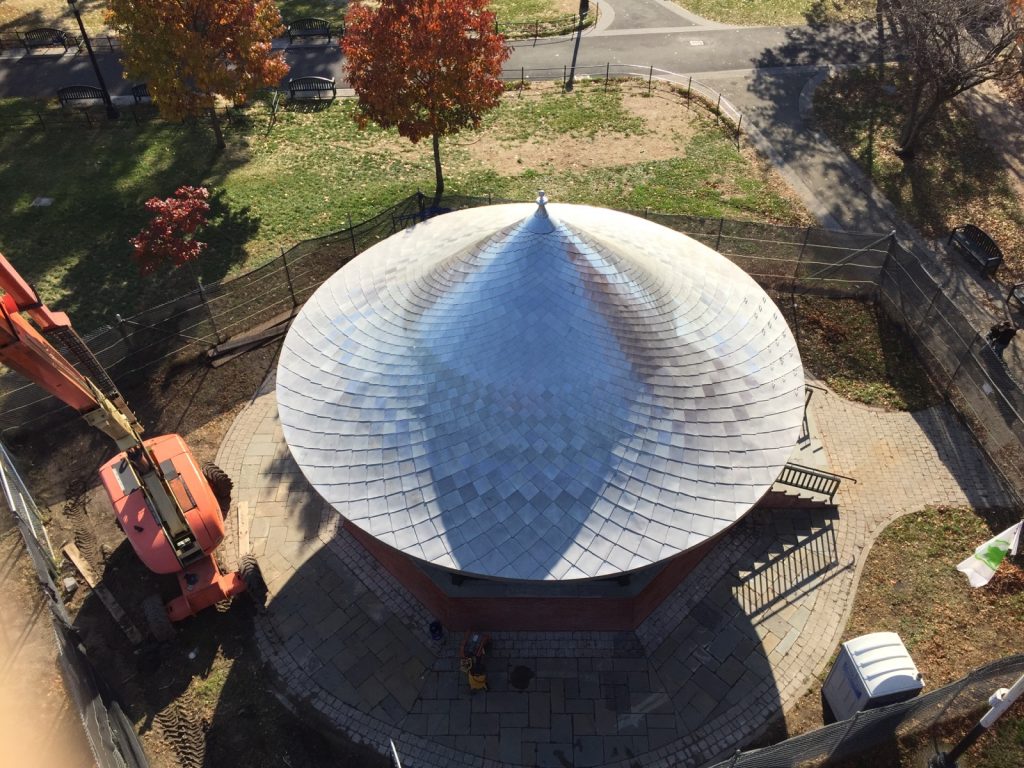What is tinned stainless steel and what does it do?
The bilateral electrolytic coated tin layer (100% tin) has two primary functions:
- Patina formation (eventual homogeneous matte-grey surface)
- Soft-soldering ability supported by the tin layer
Tinned stainless steels are delivered with un-weathered tin coating. This means the mill finish is going to be much shinier than a fully patenated version. Unlike many other living metals, tin will weather much more quickly.

This picture shows a terne turret clad with custom made diamond shingles. The rows were installed within days of each other. You can see how quickly the patinating process commences. This will eventually culminate in a soft, matte gray, homogeneous finish.
With regard to point 2, let’s clarify what we mean by solderability as it pertains to terne.
The base metal in terne as previously mentioned is stainless steel. Stainless steel has a very low heat conductivity which means you can solder at a very low temperature.
As tin clads the surface of terne, that opens up a lot of time savings. Solder for general use typically consists of 50% tin and 50% lead. Like metals like themselves and tin is no exception. It adheres very well to itself. For sake of comparison, when soldering copper, the surface must be pre-tinned before the soldering process can begin. For obvious reasons, that step can be skipped with terne.
Terne requires no special machining or equipment. It can be manipulated with the same tools as is used for copper.
Terne metal is reactive to its environment which helps it develop such a beautiful patina. As such, it is susceptible to fingerprints. Gloves must be worn when handling.
Terne is paintable.
Call us with any questions. We’re here to help!
